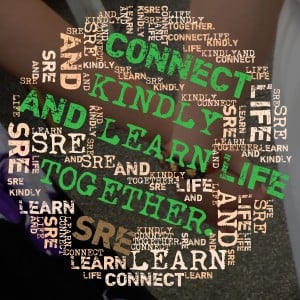It’s Leadership Day 2014, a call from Scott McLeod to offer insights for leaders in education. One topic of importance Scott addressed when he first started this discussion is
- “what it means to prepare students for the digital, global world in which we now live.”
For leaders today, take time to do four things:
- Consider the Common Core State Standards for their Technology Integration; Beth Goff has done this for you here.
- Consider the ISTE NETS Standards for Administrators
- While considering these, watch kids: Not in the classroom, but wherever they gather
- Consider the world outside education, and what is “college and career ready”
1 Consider the Common Core State Standards for their Technology Integration
The Common Core State Standards [CCSS] and the new assessments for these standards expect students to read online, research online, annotate online, compose online. Take a look at Michael Graham’s Google Apps Meets the Common Core. If your school is a Google Apps for Education [GAFE] school, then you already have an advantage for those integrated and expected technology skills in the CCSS. Students can research within their Google Docs with the research / scholar tools, share and collaborate on projects, revise and offer feedback, consider their revision history, and publish to an audience. They can use Calendar to plan their own or collaborative projects; they can call experts to interview through mail or hangouts; they can create websites of information that address issues. Teachers and students work together; assessment can be interactive or individual – with immediate personalized feedback; families can view what students are doing. Virtually all technology integration for CCSS is covered as a GAFE school.
2 Consider the ISTE NETS Standards for Administrators
Just look at the Admin Essentials. Here are a few:
Shared Vision–Proactive leadership in developing a shared vision for educational technology among all education stakeholders, including teachers and support staff, school and district administrators, teacher educators, students, parents, and the community
Empowered Leaders –Stakeholders at every level empowered to be leaders in effecting change
Curriculum Framework –Content standards and related digital curriculum resources that are aligned with and support digital age learning and work
Student-Centered Learning–Planning, teaching, and assessment centered around the needs and abilities of students
Assessment and Evaluation—Continuous assessment of teaching, learning, and leadership, and evaluation of the use of ICT and digital resources
Engaged Communities–Partnerships and collaboration within communities to support and fund the use of ICT and digital learning resources
Each of these requires the use of more than email. Today’s technology allows teachers to assess standards efficiently for focused instruction today. I’ve already mentioned Google Apps ability to assess. GAFE also works with the free learning platform called Edmodo, which has just offered a free CCSS assessment tool, Snapshot. Ask your techy teachers; they’re already aware and willing to share. Build that shared vision together; empower your teacher-leaders. Help them build that curriculum centered on students. Build an engaged community with today’s tools: shared documents, video chats [hangouts], shared calendars. If collaboration is key, and the newest NWEA study indicates so, then using these tech tools to do so makes sense; the adults need to learn these tools as well to understand what students today already do.
3 While considering these, watch kids: Not in the classroom, but wherever they gather
Do you see many kids watching TV these days? Nope: they watch YouTube. YouTube is the go to place for learning. Need to know how to cut your bangs? Go to YouTube. Need a quick gift to make? Go to YouTube. Like the new duct-tape gifts — go to YouTube. Need to know something on Minecraft — go to YouTube. Kids today find what they want to know online. Need help writing that essay for English — text or Facebook for help. And they are creating and sharing what they know online. The are producing, not just consuming. What does that say for rows of desks and your textbook? It’s time for change, with students at the center and technology as the tool for research, collaboration, and creation.
4 Consider the world outside education, and what is “college and career ready”
The world is flat; we don’t need to fly to Florida. We can confer with technology. Everything is interconnected. Information is everywhere, anywhere, anytime. Knowing how to build relationships and connections, to gather relevant and valid data, and to synthesize that for the project for your business requires new literacies and new collaboration skills. That’s why the CCSS integrates and expects students to use those tech tools.
There’s a great post by A J Juliani about how little our classrooms have changed — at least when considered from the outside, because many teachers are already innovating and reforming their classrooms. A J Juliani picked up on the sad state of outside views of education in his post, Hey @Disney, Here’s What the Modern Classroom Looks Like. The Disney movie showed the same rows of desks with teacher at front as you would see in 1900’s. He says:
“If society continues to see this view of teaching and learning in shows and movies then their perspective on the educational system will be one that is outdated. Worse, it will be one that sees no need for change.”
Leaders, we’ve got to tell our stories — and wake up to the needed changes. So, leaders: let’s consider together: “what it means to prepare students for the digital, global world in which we now live?” What do those tech standards in the CCSS really mean for today — and tomorrow? How much do our students know — and how can we guide them towards those collaborative and connective skills so needed in their world tomorrow?
Let’s collaborate on getting ourselves and our students into today’s connected world. How about I share a Google Doc and we get started thinking about what we can do? Let’s be the compass that guides us forward together.



